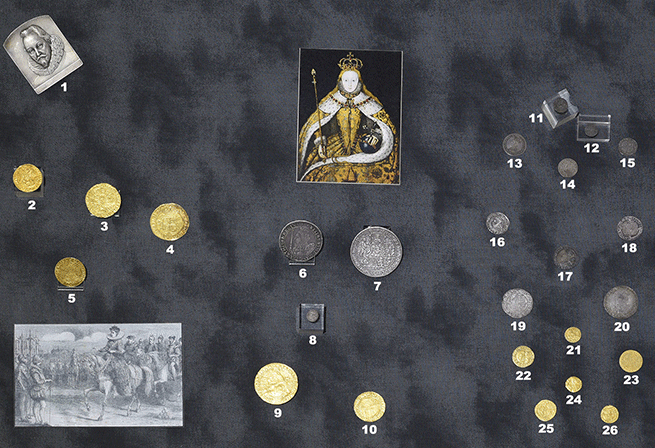Elizabethan England
Queen Elizabeth I (1558-1603) is among the most famous rulers in world history. Elizabeth was born to Henry VIII and his second wife Anne Boleyn in 1533. She was third in line to the throne, behind her younger brother Edward VI (1547-1553) and her older half-sister Mary (1553-1558).
Queen Elizabeth I (1558-1603) is among the most famous rulers in world history. Elizabeth was born to Henry VIII and his second wife Anne Boleyn in 1533. She was third in line to the throne, behind her younger brother Edward VI (1547-1553) and her older half-sister Mary (1553-1558). Since Mary was a Catholic and 17 years older than the Protestant Elizabeth and the sisters were not close – Elizabeth was imprisoned for a time during Mary’s tumultuous reign.
Elizabeth became Queen in 1558 at the age of 25, upon her sister’s death. Her reign was a golden age and witnessed England’s transition from the Middle Ages to the Renaissance. England entered an unprecedented period of prosperity during which the country became a leading European naval and commercial power. The “golden age” saw the flowering of writing and music. William Shakespeare and other playwrights revolutionized the genre worldwide, and English poets and writers became leaders in their fields.
The defeat of the Spanish Armada increased Elizabeth’s power and gave Englishmen the confidence to explore and create an empire. She consolidated the Protestant Reformation in England begun by her father and initiated a period of internal religious and political peace under a strong centralized government, in stark contrast with the reigns before and after.
Elizabethan England contrasted sharply with the rest of western Europe. The Italian Renaissance was crushed under Spanish domination, France was embroiled in religious strife and the Netherlands was engulfed in the brutal Eighty Years’ War against Spain for independence.
Did You Know?
London, the heart of England, reflected the vibrant qualities of the Elizabethan Age. Its dramatists and poets, led by the incomparable Shakespeare, were among the leading literary artists of the day. London grew to nearly 200,000 people under Elizabeth, becoming one of the major commercial and cultural centers of Western Europe.
 |
|
Click on the items in the case image below for an enhanced view
